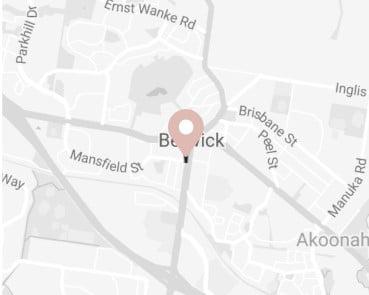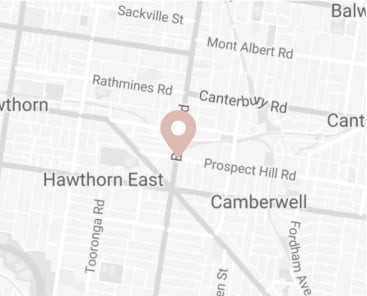In our last blog post, we took a deep dive into everything you need to know about skin needling (micro needling). This week, we’re back to look at how skin needling can help with Rosacea. Rosacea is a chronic skin inflammation that primarily affects the skin on cheeks, the nose and between the brow. Most sufferers notice a combination of dilated surface capillaries, a constant red or flush appearance, and small pimples or lumps.
If you are someone who is affected by Rosacea, you’ll definitely want to stick around to find out more about how skin needling (micro needling) can help with managing and reducing symptoms to help you lead a more confident life. Read on to find out more!
What Is Rosacea?
Rosacea, or acne rosacea, is a non-contagious skin inflammation that exclusively affects the face. Oftentimes, rosacea can be mistaken for acne, eczema, or an allergic skin reaction.
Although rosacea is most commonly seen in middle-aged women with fair skin, it can affect all people of any gender and/or age.
What Causes Rosacea?
Although the exact cause of Rosacea is currently unknown, it could be due to an overactive immune system, heredity, environmental factors or a combination of these. Some other factors that may play a role include bacteria, mites and blood vessel problems.
Some may suffer from broken vessels, constant static redness and/or may flush easily due to lifestyle factors or triggers without experiencing the pustules, burning or sensitivity of someone with Rosacea. This is classed as diffuse redness. Diffuse redness is caused by dilated capillaries under the skin which create the appearance of general facial redness. Some causes include ageing, genetics, prolonged sun exposure, pregnancy/childbirth, oral contraceptives, and oestrogen replacement therapy.
What Are The Different Types Of Rosacea?
There are four types of rosacea, though many people experience symptoms of more than one type. The types include:
- Erythematotelangiectatic Rosacea – This type of rosacea is categorised by the appearance of skin flushing and spider veins. This reddening of the face can be caused by certain triggers including alcohol and stress. Facial flushing consists of skin redness and the feeling of warmth which have rapid onset but are short-lived in nature.
- Papulopustular Rosacea – This type of rosacea is categorised by red bumps, pustules (pus-filled spots), and reddening of the skin. These bumps may resemble acne and can also be accompanied by burning and stinging.
- Phymatous Rosacea – Symptoms of Phymatous Rosacea include thickening of the skin on the face. Thickening is often noticed on the chin, forehead and nose. Thickening of the nose is the most common of the three symptoms.
- Ocular Rosacea – Unlike other types of Rosacea that affect the skin, Ocular Rosacea affects your eyes. Symptoms may include dry, red or irritated eyes and blurry vision. Eyes may also frequently water and inflammation/cysts may be observed on eyelids.
What Are Rosacea Symptoms?
Signs and symptoms of Rosacea may include (but are not limited to):
- Facial blushing or flushing
- Visible blood vessels (spider veins);
- Swollen bumps on the skin;
- Enlarged nose;
- Larger pores;
- Bumps on eyelids; and/or
- Issues with eyesight.
Does Skin Needling (Micro needling) Help Rosacea?
If you are wondering how to get rid of Rosacea, skin needling (micro needling) can be an incredibly helpful and effective treatment. To recap on skin needling, it is a minimally invasive treatment that involves using small needles to create minuscule wounds in the skin. These wounds trigger your body’s natural healing process, resulting in collagen production and tightening of skin.
While there’s no known cure for rosacea, skin needling treatment can successfully minimise the appearance of common symptoms by normalising the creation of blood vessels (known as angiogenesis) and releasing regulatory growth factors. To put it simply, skin needling can be beneficial for treating rosacea because it helps to reduce inflammation and improve blood circulation.
Additionally, skin needling may also help reduce the number of contributing bacteria on the skin.
Microneedling Aftercare For Rosacea Patients
Aftercare for skin needling (micro needling) differs slightly for rosacea patients. The following are some things that rosacea patients should avoid after skin needling:
Avoid Triggers – Some triggers for Rosacea include certain food/drink, alcohol, emotional stress, caffeine, strenuous exercise and more. You will know your triggers best, and it is important to avoid them after skin needling treatment.
Do Not Use Glycolic Acid – Give your skin a break and avoid skincare products containing glycolic acid.
Avoid Strenuous Activities – After skin needling, it is important to avoid excessive swearing for at least a few days. Sweating can cause irritation to skin and may also introduce dirt and debris. Avoid strenuous activities such as cardio exercise, weight lifting, sports etc.
How VC Dermal Clinics Melbourne Can Help
It’s our belief at Victorian Cosmetic & Dermal Clinics that everyone has access to beautiful skin, regardless of conditions such as Rosacea. Our dedicated team of therapists are highly experienced in the use of Derpamen to treat symptoms of Rosacea.
To find out more or to book a microneedling consultation, simply contact us today.




